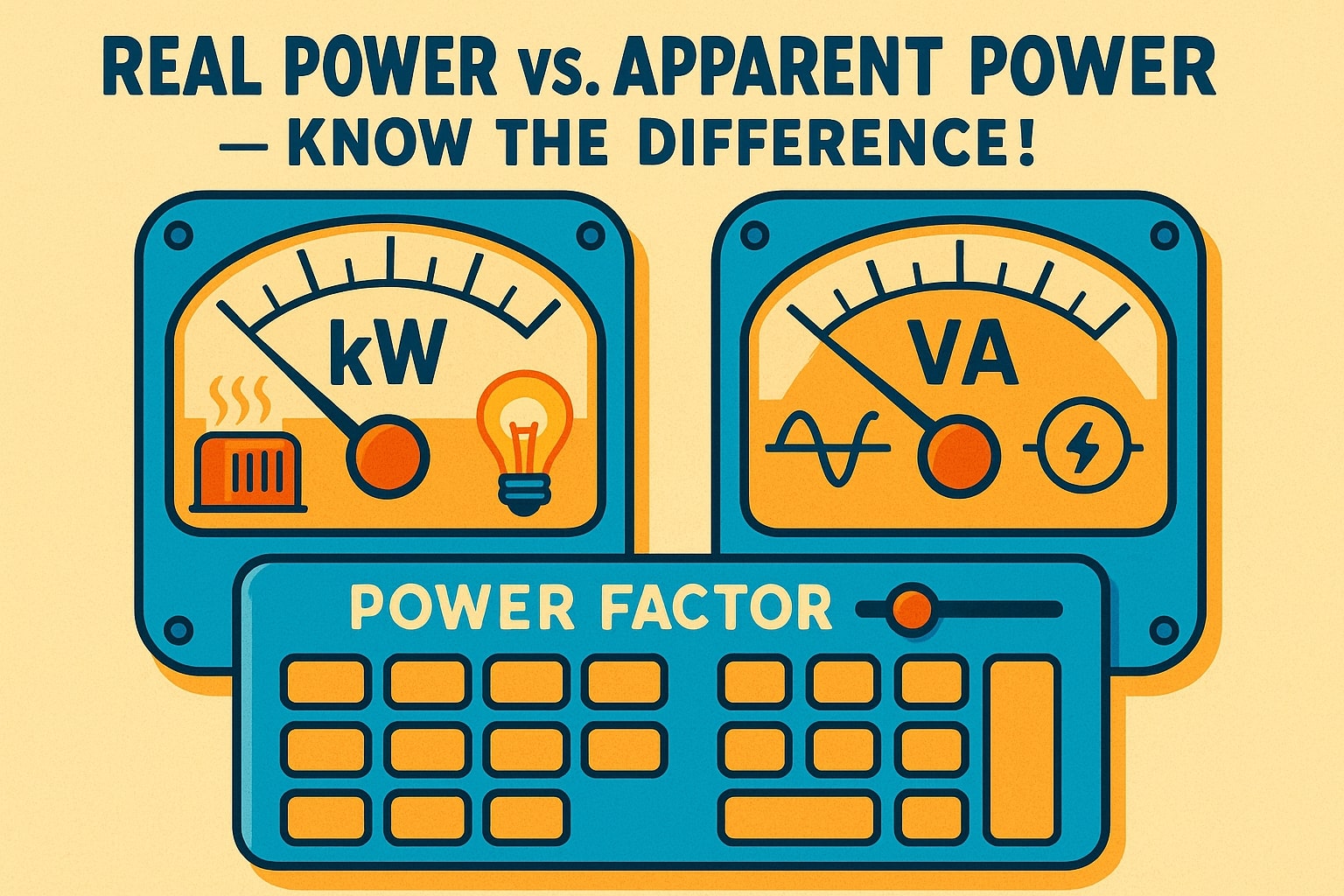Kilowatt to Volt-Ampere – How to convert kW to VA
When working with kilowatt to volt-ampere conversions, you’re moving between two measurements that describe electrical power in slightly different ways. Kilowatts measure the actual power a device consumes or produces, while volt-amperes measure the apparent power flowing through a system. These terms are closely connected, but they’re not identical — and knowing how to convert between them is essential in electrical engineering, energy management, and even sizing generators.

What is a kilowatt (kW)?
A kilowatt represents 1,000 watts (1 × 10³ W) and measures real power — the energy a device actually uses to perform work.
For example, a space heater rated at 2 kW draws enough energy to generate real heat output, while an electric car charger might use 7 kW to deliver usable energy to the battery. Kilowatts show up on your electric bill because they directly represent the power converted into work (like heating, lighting, or motor movement).
What is a volt-ampere (VA)?
A volt-ampere measures apparent power in an AC (alternating current) circuit. It’s the product of voltage and current, without accounting for how efficiently that power is being used.
Electrical systems aren’t perfectly efficient — due to factors like inductance and resistance, not all apparent power is converted into real, usable power. That’s why devices often list both kW (real power) and kVA (kilovolt-amperes, or 1,000 VA) on their nameplates: engineers and electricians need both numbers to size circuits and equipment correctly.
How to convert kilowatt to volt-ampere
The conversion depends on something called the power factor (PF), which measures how effectively electrical power is converted into useful work. For most systems, PF ranges between 0.7 and 1.0, with 1.0 representing perfect efficiency.
The general formula is:
Volt-Amperes (VA) = Kilowatts (kW) ÷ Power Factor (PF)
Example: A commercial motor is rated at 50 kW with a power factor of 0.8.
50 ÷ 0.8 = 62.5 kVA (62,500 VA)
For instant, hassle-free calculations, use our Power Converter or explore other Conversion tools.
Did you know?
-
Generator sizing: Most backup generators are rated in kVA, not kW, because engineers must account for power factor and ensure the generator can handle both real and apparent power.
-
Data centers: Large data centers often operate at power factors near 0.9. Converting between kW and VA ensures servers and cooling systems are powered without overloading circuits.
-
Grid efficiency: Utility companies track power factor closely — poor power factor (like 0.7) forces them to generate more VA than necessary, wasting capacity and increasing costs.
-
Household impact: Many modern appliances include power factor correction, allowing them to operate closer to 1.0 PF, which reduces wasted apparent power and improves grid efficiency.
When Power Factor Changed How We Sized Equipment
In the 20th century, as factories began using more electric motors and inductive loads, engineers realized that sizing equipment based solely on kilowatts wasn’t enough. According to records from the Institute of Electrical and Electronics Engineers (IEEE), many facilities experienced tripped breakers and overheated transformers because they ignored apparent power.
By incorporating volt-amperes and power factor into their calculations, designers could size generators, transformers, and wiring correctly, reducing energy waste and preventing costly failures. Today, almost every industrial electrical plan uses both kW and VA to keep systems safe and efficient.

Conclusion
Converting kilowatt to volt-ampere isn’t just about math — it’s about understanding how power moves through a system. Real power (kW) keeps your lights on and your machines running, but apparent power (VA) tells you how much strain the system is under. Without factoring in both, circuits could be overloaded even when your “real” power use seems low.
For fast, accurate conversions that account for the details, try our Power Converter or explore other Conversion tools to handle any power-related calculation.

